Audioquest redwood
The AudioQuest Redwood is so skilfully balanced that imperfections cancel out each other and a result is the most invisible cable I have ever heard, irrespective of price. Through the Redwood music breathes as it neither compresses nor constricts the bloom of instruments´ natural timbre. It paints dense and palpable images yet it does not sound heavy. It is airy and delicate yet it is not wispy or thin – the upper octaves of cymbals are like life itself. It was as if the cable stepped aside and let the music communicate to a listener directly without any electrical mist induced by audio devices.
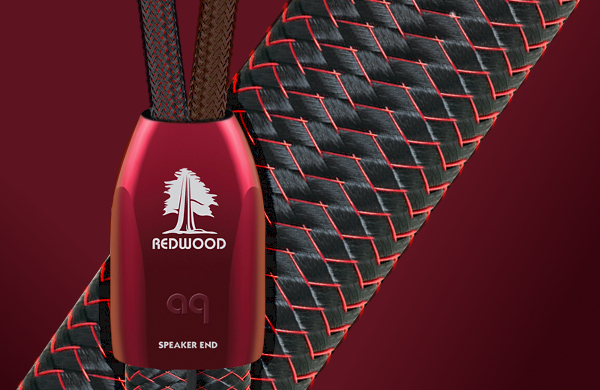
The Convergence Point
The portfolio of AudioQuest is not only by far the most complex catalogue of everything that is called to service when audio, video or digital components are to be linked together, but it is very dynamic too. In AudioQuest they have never had any issue with discarding a product or a product line if a better solution has become available - and because the company has been around for 35 years (which is about the same like CD format) there are zillions of AudioQuest’s products circulating in audiovisual world.
Two years ago I reviewed the fabulous Wild Blue Yonder that reset my standards for high performance audio interconnects. Back then I made the remarks that the Wild Blue Yonder had brought a new grade of illumination, that the recording had seemed to bath in light and air and had had unbelievable amount of subtle detail. The sound flew like pure water in a mountain stream - I had not heard anything like that before, irrespective of asking price.
The sonic bliss of the Wild Blue Yonder raised my interest in all top-of-the-line AudioQuest’s cables. I started searching for speaker cables from their “Tree” series that comprised of Oak, Redwood and Wild then. I located one “ex-demo” cable from a private reseller and quickly organized auditioning at my place. The guy arrived the next day with the Redwood. To keep it short, what I heard was not bad but it was very disappointing. The cable sounded closed-in, soft and threw just standard soundstage. I swapped back my time-tested Krautwire Fractal and – voila – I was back in a concert hall. The ‘Redwood’ was not only soft in sound but physically also – it bent easily, its bananas were not sitting tight in speaker terminals, its braid was quite loose – you have got it, a typical fake. Coincidentally just couple of weeks later I encountered the Redwood again at the High End Munich show and reconfirmed my suspicion: the craftsmanship of the Redwood was totally different level there, stiff, polished and perfect. The fake-seller was reported to the official representation.
Which brings me to one point: besides being by far the most complex, the AudioQuest’s portfolio is also by far the most copied one with many fakes travelling on the used-cables market. Be highly cautious about what you are buying outside the AudioQuest’s dealer network!
I was eager to schedule a review of a genuine Redwood but unfortunately other priorities occurred and it was only several months later when the big box with the pair of bi-wireable Redwoods knocked at my door. The timing was perfect: at the same time I had other two great performers in for a review – Stealth Audio’s Dream Petite and Nordost’s Valhalla V2 – and had fresh and vivid memories of other two stellar wires, Cardas Audio´s Clear and Tara Labs ISM The 2EX.
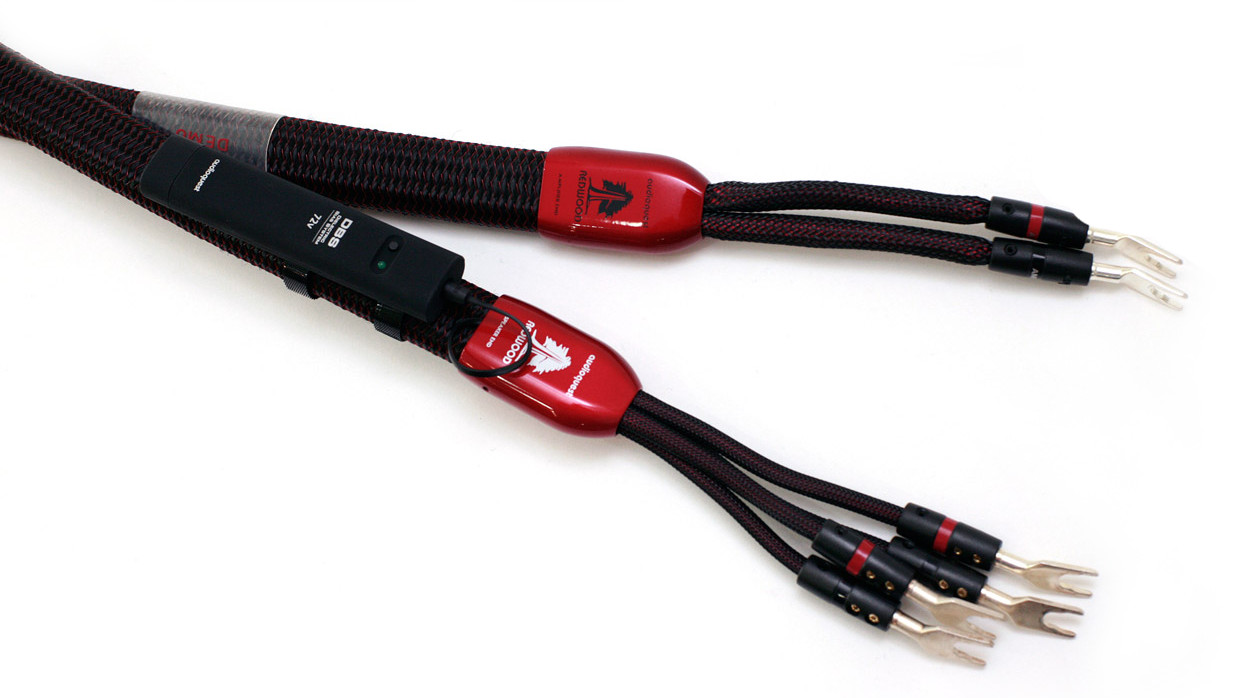
The Art of Doing Nothing
Yulunga (Spirit Dance) of Dead Can Dance (Into The Labyrinth, 4AD CAD 3013CD) has been growing with me for many years. It travels with me to hi-fi shows, it passes through different audio systems. Sometimes it lets you explore new details that have not been heard before, sometimes it is just different. Comparing to how I am used to hear this song today with the first playback of it through my Pioneer gear two decades ago seems funny to me. Yet it still can surprise me once in a while. That particular evening the spirits had to be in especially good mood as Lisa Gerrard arrived in person. Her beautiful voice filled my listening room many times before but now it was different – I could see her, she was not just a voice, she materialized in my listening room, perfectly visible. The syllables were superbly articulated yet everything sounded so natural and soothing. Then out of blue one rattle crashes with clear definition of grains inside, then another, then a hand hitting a drum’s skin and again and again. The dynamic contrast and the clarity of those sounds were awesome. I just stared into the dark where the ensemble was supposed to hide somewhere in the depth behind my loudspeakers. Before I compose another track commenced- Saldek’s sonic envelope was like a blossoming tree through the Redwood, each nuance wonderfully portrayed, each note being easily traceable from its transient through its reverb to the final decay. Tara Labs The 2EX was especially good in the transient attacks that were precisely delineated, fast as hell and drawn on a pitch black background. Then with Nordost Valhalla V2 the track got energized and lit up plus it acquired much firmer lows. Cardas Clear speaker cable helped colors develop and enabled textures to shine as if it was saying that humans made this music. Stealth Dream Petite could do the trick with transforming digital to analogue with all the smoothness and warmth without any trace of jitter or edge. Every great cable I had in my system before the Redwood has a certain feature that made it different from another – a certain quality that made it perfect match for one system and mismatch for another. In this context the Redwood seemed to be absolutely unexceptional. There was a lack of anything that I would call “a certain quality”. It was totally transparent, just invisible for sound.
No More Trees and Other Stories
At the moment of writing this review there is no “Tree” series in the catalogue anymore – the bunch of top cables has become “Double Counter-Spiral” series, now inhabited by the brand new Aspen speaker cable and the reputable Oak (both entirely copper designs), Redwood and Wild Wood (both hybrids of silver and copper) and the WEL Signature flagship (entirely silver). The difference between the Redwood and the Wild Wood is the amount of silver in the total count of 16 solid core conductors – 6 silver conductors in the Redwood, 10 in the Wild Wood.
The solid core wires by their nature prevent strand interactions, which happens to be - according to AudioQuest – usually the greatest source of distortion in an audio cable. Surface quality is another key element for a conductor that serves as a ‘rail-guide’ for both the electric fields within a conductor, and for the magnetic fields outside the conductor. The same finesse applies to metallurgy where AudioQuest aims to minimize distortion caused by grain boundaries through high purity materials. The Redwood utilizes optimized combination of highly polished Perfect-Surface Copper and Perfect-Surface Silver conductors in a Self-Shielding Counter-Spiral HyperLitz arrangement.
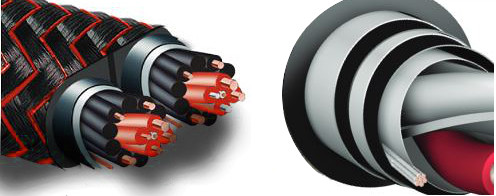
What is the HyperLitz? Litz is a German word that means ‘woven’ or ‘braided’. In the HyperLitz design AudioQuest lets a circular array of positive conductors spiral around a core and then another circular array of negative conductors spiral in the opposite direction. The positions of the individual insulated wires are fixed and thus the interactions are consistent and controlled. No need to say that this principle has been adopted by nearly all high end cable manufacturers.
At War with Time
Any conductor of a particular size and section does have a sonic signature, doesn’t it? So, how to choose the right one? It takes thousand hours of experimentation, auditioning and serious research to appoint the right wire profile – at least this is what usual marketing brochures say. The problem is that this approach leads to development of a cable that brings the whole audio system together, a synergistic product. Should that be the goal? No, says AudioQuest, forget about synergy! The cable has to be neutral sounding – as sonically invisible as possible - in any system! Both the Redwood and other Double Counter-Spiral cables utilize an array of different size conductors in order to significantly reduce the character flaws that would be audible if just one size of wire was used. Plus the Redwood (and the Wild Wood too) adds the aforementioned hybrid metallurgy to further eliminate any signature-sound bias.
The negative conductors in the Redwood are insulated with partially conductive Carbon-Loaded Polyethylene. This remarkable material damps radio-frequency garbage from being fed back into the amplifier. On its positive conductors the Redwood uses Nitrogen-Injected Foamed-Polyethylene dielectrics in order to minimize absorption of energy that could smear the signal when it is gradually released back with time-delays. With growing resolution of high end audio the temporal errors are becoming more audible and, unlike frequency errors, require different set of combat techniques.
The multiband audio signal is extremely sensitive species - it can be even affected by polarization of molecules in a conductor’s insulation. AudioQuest suggests that an unpolarised dielectric impairs the signal through non-linear energy transfers. As weird as it may seem this effect could be a partial explanation for the burn-in period that is a well-known phenomenon in cableology, but so far not much understood. AudioQuest uses the same weapon to fight back: energy.
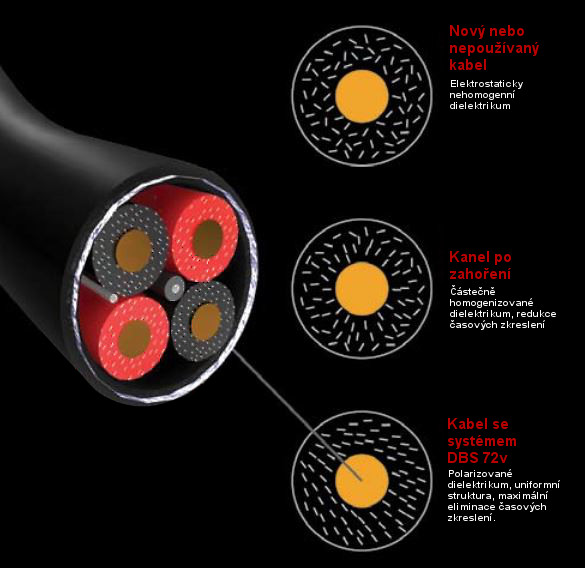
There is a black capsule attached to the Redwood. Called DBS 72V system it does not interfere with audio signal but helps to remove the signal’s external disturbances. Simply put, the DBS creates a strong and stable electrostatic field which polarizes the molecules of the insulation. The insulation that is saturated by the energy from the DBS should lose the capacity of absorbing any additional energy from the propagating audio signal. This prevents parts of the signal’s energy to be stored and released back afterwards, thus reduces the smear of the signal in time. The DBS system is battery powered – a small push button with LED indicates it is on guard and ‘energizing’.
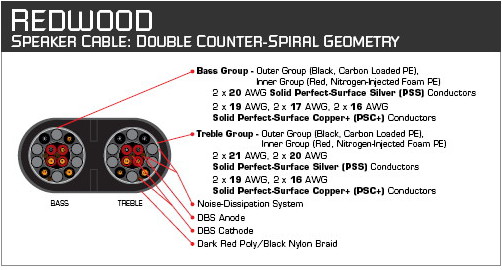
Nondescript Superiority
Since my experience with the aforementioned loom of high end cables I have wished to find one that would combine everything: the imaging, attack, speed, dynamics, timbres and textures, just everything. Is the AudioQuest Redwood such a cable? I do not know. Actually, I do not know what the Redwood excels at. What I only know is that it does not lack anything. For me it comes the closest to the point that I would swear that there is no cable between amplifier and speakers. I see it on the floor - its dark red coils - but I had no idea how it sounds as I cannot identify its imprint.
Beethoven´s Seventh starts with a massive and slow introduction. Ranking at round thirteen minutes it is arguably the longest introduction of any Beethoven´s symphonies. But what an introduction! It constantly keeps the listener at the edge of its seat with a playful mix of light passages and full forte outburst until the second movement arrives. And the second movement of the Seventh is one of the most captivating classical pieces ever written. The music is so emotionally charged that it earned multiple encores even at the very first performance, the testament of its exceptional quality. It is medium paced swirl of a minor-key theme that repetitively comes back again and again, long after the CD stops. Bernard Haitink´s performance from London´s Barbican Center (Symphony No.7 in A major, Op.92, London Symphony Orchestra, LSO 0578) is seen as if from the conductor´s point of view and that lends the unique quality to it. Instead of being relegated into the audience the listener takes the wand and communicates with string sections from elevated perspective that was absolutely stunning through the pair of the Redwoods. The soundstage was deep and breathing, the voices of flutes coming from the depth of the orchestra did not have to pass through veils but were present and texturally rich. The AudioQuest did not dissect the music into sonic individual elements – quite opposite it managed to capture the essence of the orchestra, its cohesiveness and organic unity, yet with all the internal delicacies. There was a strong sense of nothing between the music and the listener – I did not feel like listening to a superb high end component, I rather felt like being there.
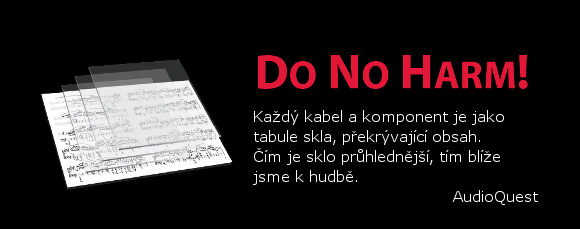
The Redwood Trail
There is just one rule of reliable cable terminations: make it simple. Using the best conductive materials and minimizing the number of bridges between them is essential for great sound. The version of the Redwood I had for this review featured bananas on speaker end and spade lugs on amplifier end. Both silver plated directly over the copper without any intermediary layers. Silver is a better conductor than gold, and its performance is even improved by the natural oxidation process of the silver.
As much as I like WBT connectors I also have trouble with the fact that they are attached to a wire by crimping or tightening screws. Then I found Silver Audio, Cardas or Stealth. No crimping, no soldering (with heat affecting crystalline structures of metals) - just brutal pressure to cold-weld the connector with the conductor until they become one. The only way to remove the spade lugs is to cut them off. If you need to re-terminate do it through AudioQuest, otherwise you may compromise the cable’s performance through imperfect terminations.
The Redwoods are not easy to bend. The cable is not overly thick but due to its solid core design it is very stiff (and heavy too!). If you have limited amount of space behind components make sure first that you will be able to use it. Unless there is a straight line between your speakers and the amplifier always calculate with extra length as you may end up with a too short cable due to generous turns you will have to take. Also I would recommend to use bananas to facilitate the ease of connection as the spade lugs can be difficult to accommodate if the terminals of your amp or speakers are not sufficiently spaced – for example, I was not able to use the spade-lugged amp end of the Redwood with the Pro-Ject Stereo Box integrated amplifier that was in for a review neither with Blue Horizon Pro-Burn machine.
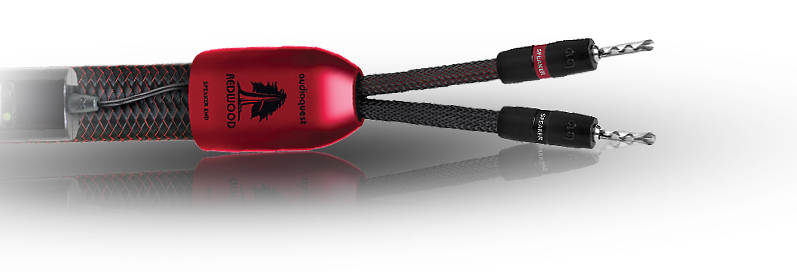
Craving
The holy grail of high end is a cable with absolute transparency. I do not think that the Redwood does not have any sound of its own, that it does not leave any sonic signature, as this is technically impossible. But it is so skilfully balanced that imperfections cancel out each other and the result is the most invisible cable I have ever heard, irrespective of price. Through the Redwood music breathes as it neither compresses nor constricts the bloom of instruments´ natural timbre. It paints dense and palpable images yet it does not sound heavy. It is airy and delicate yet it is not wispy or thin – the upper octaves of cymbals are like life itself. It was as if the cable stepped aside and let the music communicate to a listener directly without any electrical mist induced by audio devices.
I used the AudioQuest Redwood in Single BiWire configuration with my Bowers & Wilkins 802 Diamonds as well as with TR’s Revel Ultima Studio2’s. The amps were Accuphase’s A-60 and A-70, Mark Levinson’s No.432 and Van Medevoort’s PAQs (please check separate reviews in respective sections of Audiodrom). I would love to hear what the Redwood does in full bi-wiring - that is like a double pair - though it would be highly impractical as I cannot imagine how anyone can fit four runs of the stiff Redwoods behind a rack. AudioQuest is the active proponent of bi-wiring as it claims that bi-wiring reduces distortion by keeping the large magnetic fields caused by bass energy out of the treble cable, consequently allowing upper frequencies to travel a ‘less disturbed path’. In the SingleBiWire configuration five conductors per polarity are arranged so that they are divided into two groups, allowing the Redwood to be equipped with four terminations on the speaker end. The SBW costs the same like standard full range cable – around 4,100€/m. Double BiWire multiplies the price by two – by no means the Redwood is a cheap speaker cable, small cars are sold at its asking price. The sonic benefits outweigh the bitterness of the transaction, however.
The Wild Blue Yonder interconnects left me craving for a taster of AudioQuest’s speaker cables. Now that I have tasted the Redwood it left me craving for William E. Low Signature line. At the moment I am not sure whether I really want to audition it – there might be no way back as they seem to converge to the goal of a perfect cable.
Kontakt: AQ s.r.o., Červenka, tel. +420 585 342 232, www.aq.cz



